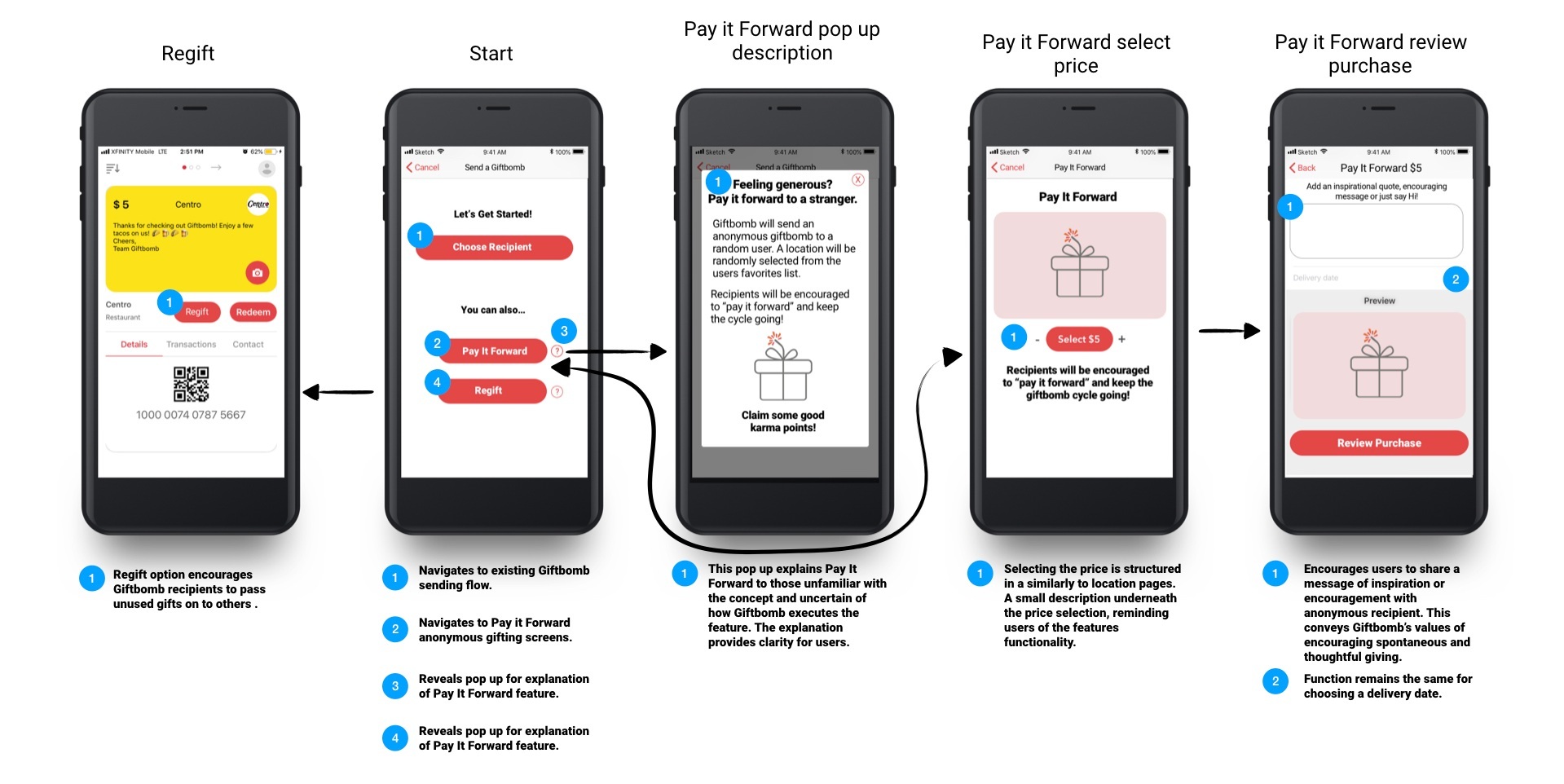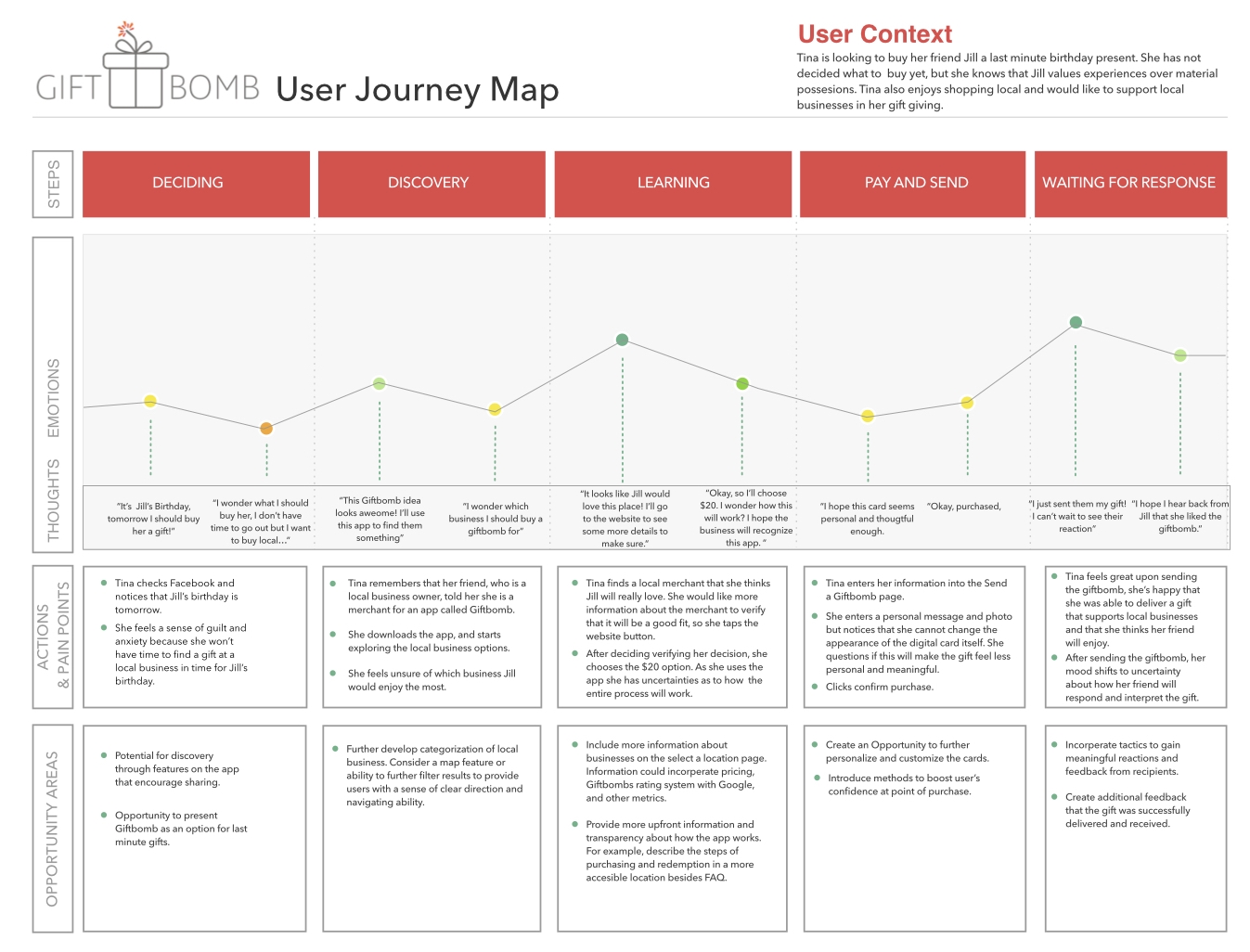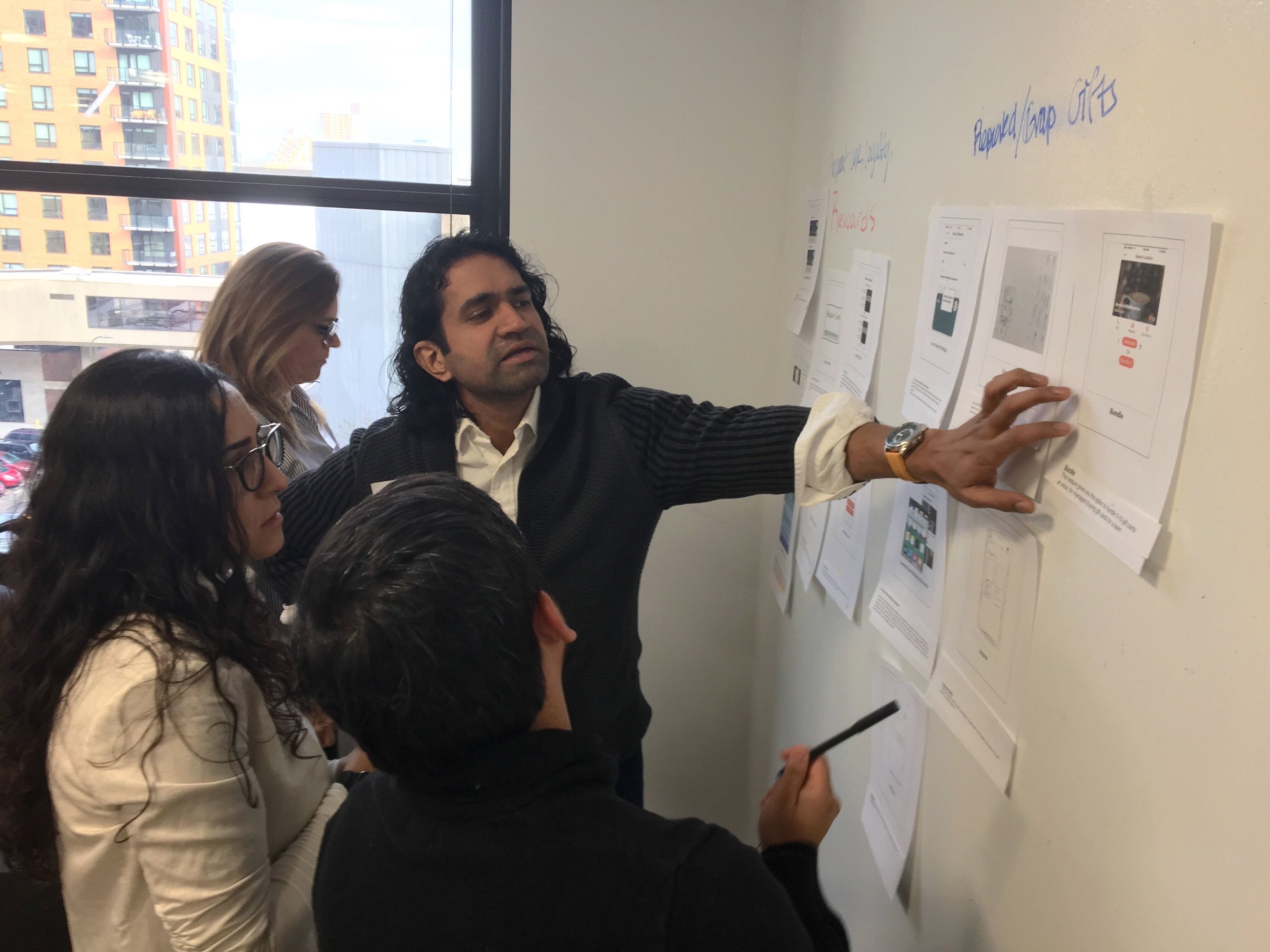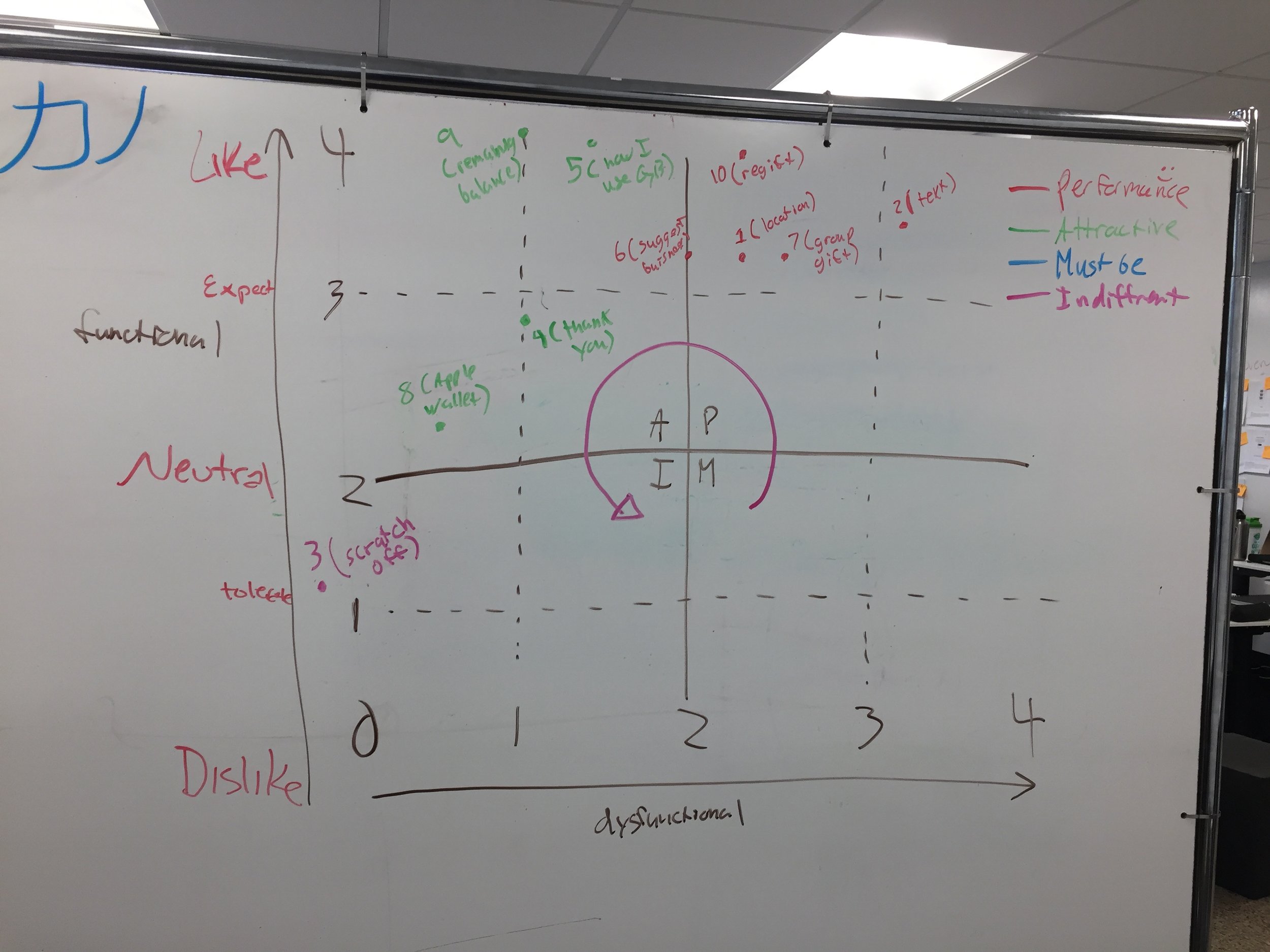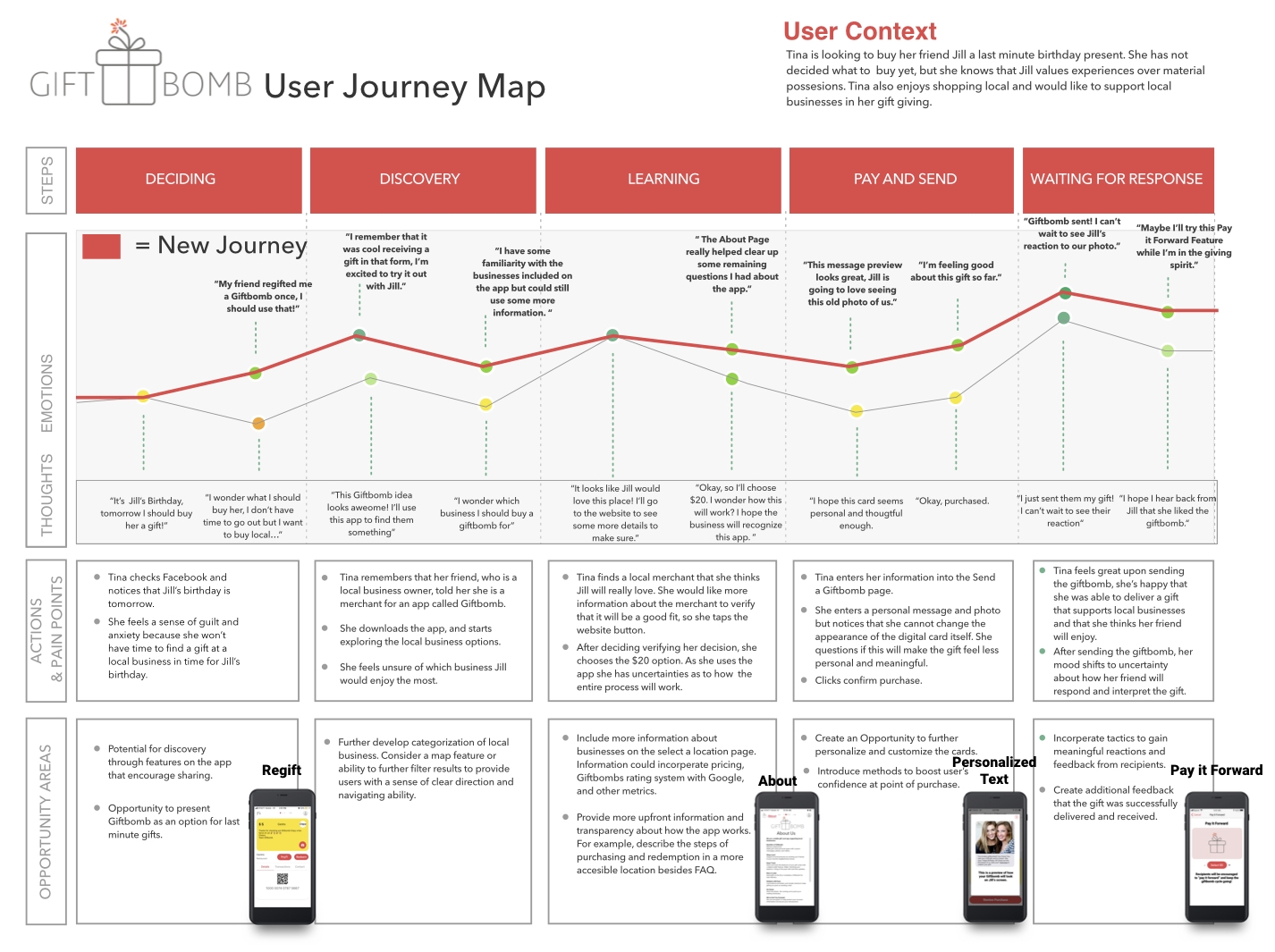Challenge
Giftbomb is a gifting app with a new and unique concept: supporting local businesses through digital gift cards. Our challenge was to make recommendations for new features while considering development and budget constraints along with user and business goals.
Approach
The approach was to first gather insights through research of the existing product space and potential users. Research findings were utilized to rapidly prototype new feature ideas, which were evaluated through client meetings and a survey with frequent Giftbomb users. After evaluation, final feature recommendations were presented in the format of a Findings and Recommendations Report.
My Role
I worked in a team to participate in client meetings, and to complete a Kano Analysis. I worked with one other designer to complete competitive audit. I created a user journey map, new feature ideas, prototype, and final report for the client individually.
Methods
Competitive Audit
User Journey Map
Rapid Prototyping
Kano Analysis
Clickable Prototype
Annotated Wireframes
Outcomes
Stakeholders were presented with annotated wireframes and an interactive prototype which provided a direction for moving the app forward.
Users
Who are they?
Primary users:
Gift givers wanting to send a quick and accessible gift to friends/family/colleagues
Recipients looking to more effectively manage gift cards
Sales/business people wanting to give gifts to employees and clients
Secondary users:
Businesses looking to grow their reach and acquire more customers
What do they value?
Showing appreciation and thoughtfulness through digital gift cards.
Supporting the success of local businesses.
Process
Creating the User Journey
Utilizing the existing information provided about users, I created a user journey map of a user using Giftbomb’s app for the first time. To create a relatable experience I introduced Tina, a user looking to buy her friend Jill a last minute birthday present.
Key opportunity areas were revealed through the map:
Potential for discovery through features on the app that encourage sharing.
Providing more upfront information and transparency about how the app works. For example, describing the steps of purchase and redemption in a more accessible location besides the FAQ.
Introducing methods to boost user’s confidence at the point of purchase.
Incorporating tactics to gain meaningful reactions and feedback from recipients.
Rapidly Prototyping New Ideas
Rapidly prototyping ideas for Giftbomb helped to create a dialogue between ourselves and the stakeholders.
Ideas were digitized into low fidelity wireframes then posted with a short description of each feature. At a client meeting, Giftbomb’s leadership team discussed the business priority and expected development time for each of the suggested new features. These rankings were factored into creating a realistic development budget and deciding which features would be best to move forward with.
Analyzing Survey Results with a Kano Analysis
After the client meeting, 10 features were collectively selected to become part of a survey sent to Giftbomb’s existing users. Results were analyzed using a Kano Analysis. The method quantified survey results and created clear categorization for each of the 10 features involved.
Presenting Recommended Key Features
Findings were carefully considered to select 3 new recommended features to move forward with.
I prioritized features that aligned with the goals that Giftbomb presented to us, filled opportunity areas in the user journey map, and ranked highly in the Kano Analysis. These features were:
Regifting and Paying it Forward
Personalized Text Messages with a Text Preview
About Page

